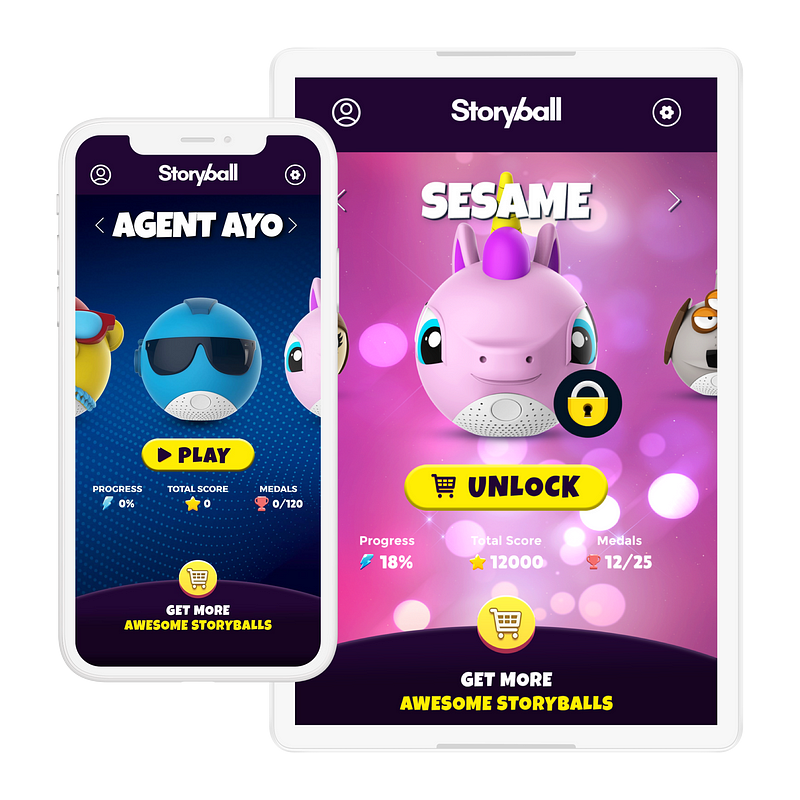Key Features and Tips on How to Build a Kids App

Childhood is nothing like we remember it. We have a new wave of tech-savvy kids for whom entertainment and learning are associated with a device.
This brought a new need on the app market-creating tech experience for kids and parents alike! Children’s apps can be useful, educational, and fun as well; it’s not only about gaming now.
Building apps for Generation Alpha proved to be beneficial for kids’ development and financially successful. Yet, the actual rewarding hides in defining how the new generation interacts with technology and how we can use tech for noble purposes.
Key Features for kids apps
Speech/narration support
If your target users are children that don’t have the reading skills yet, opt-in for a read-aloud functionality with a kid-friendly voice/tone. Highlight the words as the narrator is reading aloud stories making the content within the app easy to follow even for toddlers.
Appropriate leveling customization
Adjust your content to the kids’ skills and capabilities by adding appropriate leveling customization based on the children’s age and skills. Include an intro quiz to evaluate the suitable level to start with. This will keep kids involved, curious, and driven. Add a virtual map to showcase their path within the app with all the available levels.
Gamification features
Kids love challenges, and it might be because of the rewarding they expect to get. Add a rewarding system through tokens, points after unlocking levels, or completing trials.
Relevant learning tools
Choose the learning tools that add a real educational value backed by scientific research, studies, and input from educational specialists.
Furnish learning through a various set of methods:
- Storyline-based videos;
- Question and image-based Quizzes;
- Sports activities — online challenges for offline movement activities;
- eBooks — online coloring books, audiobooks;
- Puzzles;
- Art (drawing, singing, dancing, etc.);
- Language learning tools with words identification, audio listing, speech recognition to improve pronunciation;
- Science learning —teaching about the planetary system, math, physics, history, etc. in fun and engaging ways.
Immediate Feedback feature
Create a supportive environment and provide feedback for a whole learning experience by providing immediate evaluation and clarifying real-time the mistakes. Add pop-up explanations and tips on how the answers can be improved. Make the feedback process interactive by adding visuals, colouring the wrong answers, audio tips, or short videos with explanations.
In-app Parental Control
Even though the app is dedicated to children, include some features for the parents. Allow them to monitor the child’s activity within the application and offline. Add track location feature and geofencing that uses a global positioning system to define geographical boundaries to send notifications if the child has passed a defined physical area.
Define time limits to set boundaries and prevent long screen sessions. Provide the app blocking feature for parents that can stop their kids from using the app at a specific moment.
Keep the adult responsibilities for adults — no ads, links, social media, in-app purchases. Build a locked area where parents will engage with any commercial features.
A dashboard with stats for parents is a must-have. Include an overview of the app usage, performance, in-app behavior, and child’s progress.
Tips and Trends for building a successful kids app
The mission of the UI/UX designers is to keep in mind that kids are not regular adult users. The UI design has to be simplistic and in accordance with their age, cognitive and emotional state. The discovery phase requires much more time and observation of the target audience.
Let the kids participate in the design and testing phase. Opt for participatory design and choose a kid as your partner. Let the kids test your prototypes and explain the app with their own words.
An app for kids doesn’t necessarily mean long hours of playing on the phone.
A rising trend is to offer Screen-Free digital solutions. Check for example Storyball — a screen-free smart toy for kids’ entertainment. The Wolfpack Digital team built the iOS app for this innovative startup that offers an offline game based on physical movements and a storyline that encourages outdoor activities.

Another trend is to use tech for family activities:
- An app that teaches kids how to use money by assigning a monetary value to chores or homework.
- Eco-friendly and environment apps to teach kids about sustainability (e.g., turn the selective collection of waste into a game).
As you can see, technology can be a great educational assistant for kids, as long as apps are useful, educational, and fun.
As for the technical aspect, forget it. Wolfpack Digital is a top app development agency, and we are always ready to help you from idea-phase right to the app store launch.
Ready to build the next disrupting kids app? Drop a line at contact@wolfpack-digital.com, and you’ll hear back from us in less than 24h.
tech insights & news
Stay up to date with the tech solutions we build for startups, scale-ups and companies around the world. Read tech trends and news about what we do besides building apps.
